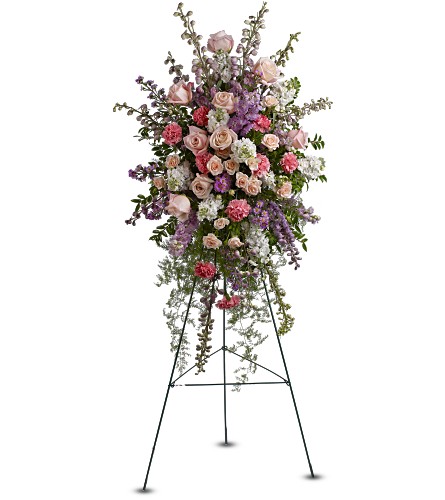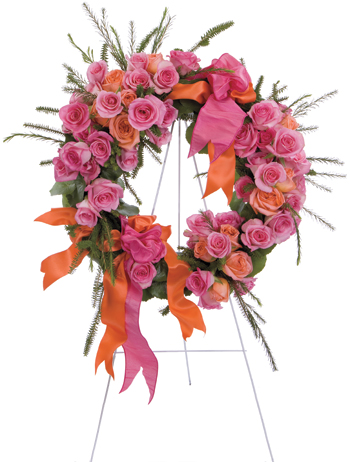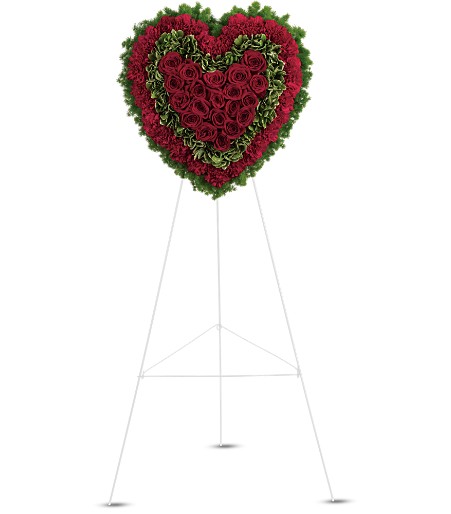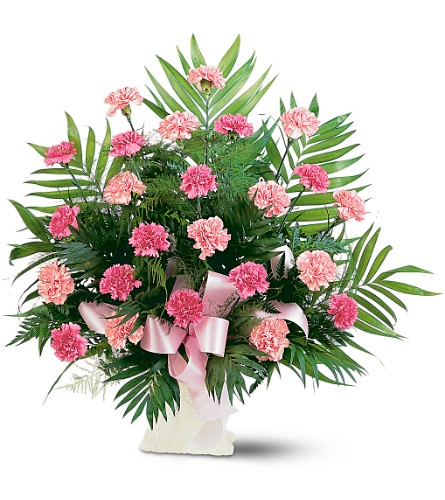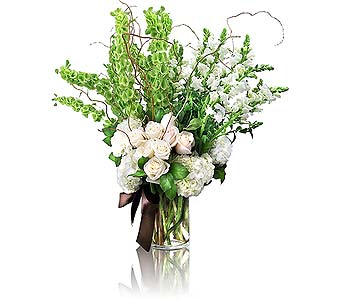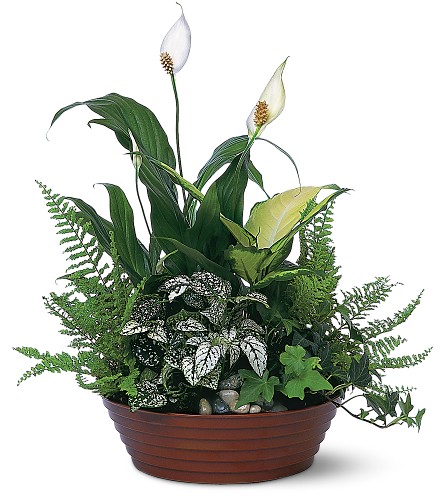Funeral Flower Etiquette
Funeral etiquette regarding flowers and what, if anything, to send relatives of the deceased appears daunting but is, in truth, far simpler than most at first think.
The sending of floral tributes and the presence of flowers and plants in your name at a funeral, cremation or a memorial service serves many purposes. The expression “flower power” springs to mind as the grace and natural beauty of flowers speaks volumes of your sentiment: offering comfort; an expression of kindness and a token of respect to both the deceased and family members.
Anyone may send flowers to the service on behalf of yourself, your family, your friends or a set of acquaintances, be it through work or play. We trust that this breakdown in relationship to the deceased helps you determine what to send in terms of flowers:
- The spouse will, if it is a funeral, usually have the honor of choosing the flowers to be placed upon the casket. If it is a memorial service or a service following a cremation, the spouse will provide the flowers adorning the cremation urn or the focal floral piece at the service;
- Children of the deceased for a funeral may provide standing sprays on easels or funeral baskets placed at either end of the casket. If the deceased has no spouse, the children have the honor of the casket flowers. For other services, children may provide sprays or funeral baskets of flowers;
- Grandchildren often wish to recognize their grandparent in the form of a single piece to represent them all. At a funeral this is often placed inside the casket such as a small bouquet for a grandmother’s hands or, for a grandfather, a hinge spray;
- Siblings of the deceased, being blood relatives, are offered the privilege of placing flowers close to the casket or the cremation urn. The nature of these may be in the form of a standing spray or funeral basket;
- Other blood relations, such as a cousin, often provide a funeral basket; and
- Friends and (former) colleagues may wish to recognize the deceased with flowers in the form of a funeral basket, vase design or, depending upon the number of persons involved, a standing spray.
Regarding the floral terms used, this brief guide may offer some clarification:
- Standing sprays come in various sizes, pricing depending upon both the flora chosen, the season -flowers out of season may cost much more than those in- and size;
- A religious symbol, such as cross or wreath, is presented in the same manner as a standing spray. Size and the flowers used again determine the price although they are usually more expensive than a standing spray;
- A heart -open or closed- or, perhaps a ribbon symbol for a charity or cause are presented in the same manner as the cross or wreath;
- Funeral baskets are the most frequently seen and vary in sizes, design and complexity. These may be the least expensive option, depending upon flora and size and work upwards;
- Image or logos are often seen for fans of a sports team or a particular hobbyist. Invariably presented on an easel in the same manner as a standing spray, these vary in price based upon the nature of the imagery and require additional time to make;
- Vase of flowers may be sent to a service and are usually design orientated to be “3-sided” for maximum visual impact on the occasion. An advantage of a vased piece is that the deceased’s family may be inclined to take it home with them; and
- Plant or “dish garden”, the latter being a collection of foliage plants, maybe enhanced at a service with the addition of appropriate fresh-cut flora designed amongst the plants. These vary in size and the most commonly seen plant at a funeral is probably the Peace Lily. As with a vased piece, the plant or “dish garden” is often taken home after the occasion by family members.
You often see statements in the Obituary asking “…in lieu of other expressions of sympathy”. This phrase, or similar, is often placed into the Obituary without a second-thought, as flowers give the room or location where the service is being held atmospheric enhancement. The flora “dress” the occasion with dignity, respect and charm, and have done so on such occasions throughout history and in most belief codes. Ultimately, think of a funeral with flowers and then imagine it without – quite a difference.
If you choose, for whatever reason, not to send flowers to the services for the deceased, we recommend sending them to the family home where the sentiment is felt more immediately, especially if there is sometime between the passing and the service. When sending to the residence, options include a vase arrangement, an alternative floral design utilizing floral foam, or a plant/dish garden. If you intend to visit the family prior to the service, a gift such as one of the options mentioned above is good etiquette. It is recommended you do not send or give flowers that require processing & designing into a vase as the family has more than enough matters that require their attention and your gift may get neglected.
The giving of flowers at any “wake” or function after the services for the deceased is usually not appropriate. The time for the flowers was the service itself or they should be sent to the family residence.
On behalf of Medford Florist, we trust that the above information has simplified the etiquette of flowers at a time of loss and that you will always consider the giving of flora at such emotionally difficult times.




